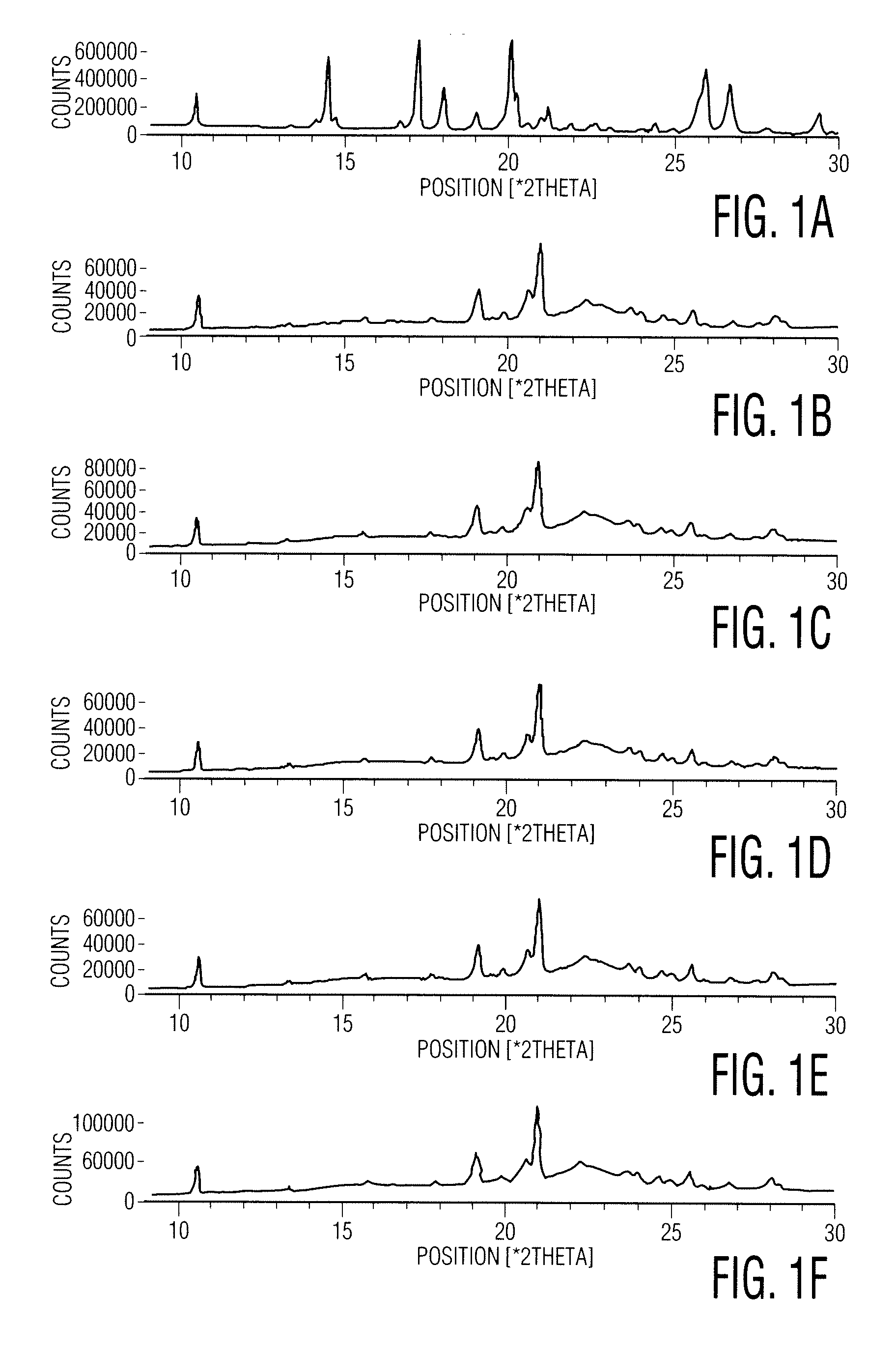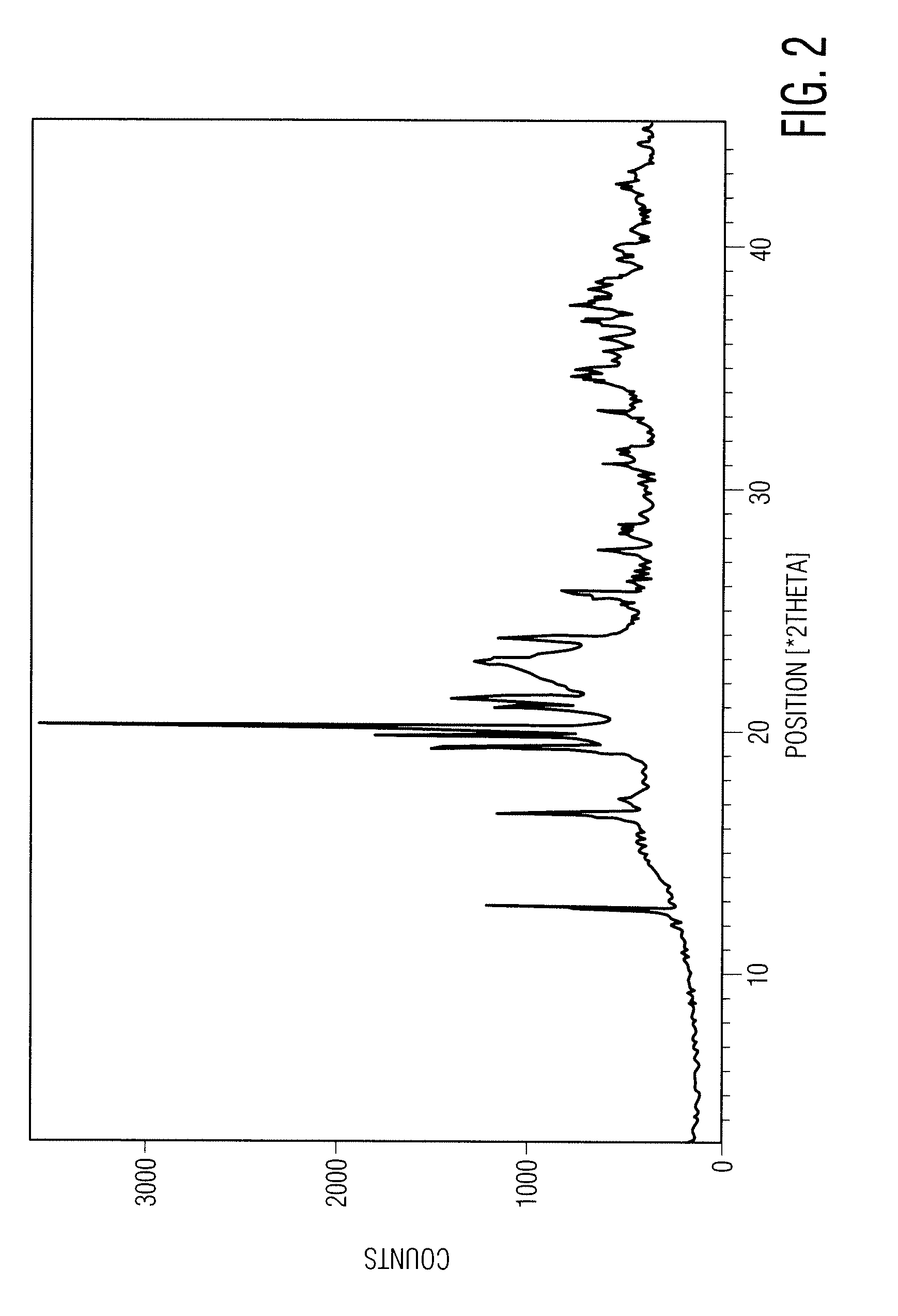Non-benzodiazepine hypnotic compositions
a technology of hypnotic compositions and non-benzodiazepine, which is applied in the field of non-benzodiazepine hypnotic compositions, can solve the problems of easy dissolution in the gastrointestinal tract, and achieve the effect of stable pharmaceutical compositions
- Summary
- Abstract
- Description
- Claims
- Application Information
AI Technical Summary
Benefits of technology
Problems solved by technology
Method used
Image
Examples
example 1
Preparation of an Amorphous Zolpidem Tartrate Composition
[0100]
IngredientsQuantity / Batch (g)Zolpidem tartrate2Polyvinylpyrrolidone (Povidone K-630)Isopropyl alcohol160
[0101] Manufacturing process: [0102] 1. PVP K-30 was dispersed in isopropyl alcohol with stirring. [0103] 2. To the dispersion of step 1, zolpidem tartrate was added with stirring. [0104] 3. The dispersion of step 2 was evaporated in a rotary vacuum evaporator at a temperature of 50-52° C. until loss on drying at 105° C. was not more than 3% w / w. [0105] 4. The residue was passed through an ASTM #40 mesh sieve.
example 2
Preparation of a Zaleplon Amorphous Composition by dry Distillation
[0106] 5 g of zaleplon, 5 g of povidone (PVP K-30) and 40 ml of dichloromethane were charged into a round bottom flask and stirred for 15-30 minutes to obtain a solution. The resultant solution was transferred into a Buchi Rotavapor and the solvent was distilled to dryness at about 35-40° C. under a reduced pressure of about 650-700 mm Hg, followed by drying the solid obtained at 30-35° C. under a reduced pressure of about 650-700 mm Hg for 45-90 minutes to afford 9.3 grams of the desired amorphous mixture.
example 3
Process for the Preparation of Eszopiclone of Desired Particle Size
[0107] 50 g of eszopiclone and 500 ml of acetonitrile were charged into a round bottom flask followed by heating to about 75° C.-80° C. for about 5-15 minutes. The resultant solution was cooled to about 25-35° C. followed by stirring for about 15-45 minutes. Separated solid was filtered and washed with 50 ml of acetonitrile followed by drying at about 55-65° C. over about 1-2 hours to afford 33.2 g of eszopiclone of the desired particle size. The particle size distribution as measured by a laser light scattering instrument (Malvern Instruments Ltd., Malvern, Worcestershire, United Kingdom) was: D10=25.7 μm, D50=92.9 μm, D90=216.1 μm and bulk density before tapping was 0.56 g / ml and after tapping was 0.72 g / ml.
[0108] Particle size, bulk density, and other data from repeating the process described above is shown below:
ApparentTappedRunParticle sizeBulkBulkCarrHausnerNo.D10D50D90DensityDensityIndexRatio125.398.1206....
PUM
| Property | Measurement | Unit |
|---|---|---|
| RH | aaaaa | aaaaa |
| particle size | aaaaa | aaaaa |
| mean particle size | aaaaa | aaaaa |
Abstract
Description
Claims
Application Information
 Login to View More
Login to View More - R&D
- Intellectual Property
- Life Sciences
- Materials
- Tech Scout
- Unparalleled Data Quality
- Higher Quality Content
- 60% Fewer Hallucinations
Browse by: Latest US Patents, China's latest patents, Technical Efficacy Thesaurus, Application Domain, Technology Topic, Popular Technical Reports.
© 2025 PatSnap. All rights reserved.Legal|Privacy policy|Modern Slavery Act Transparency Statement|Sitemap|About US| Contact US: help@patsnap.com



